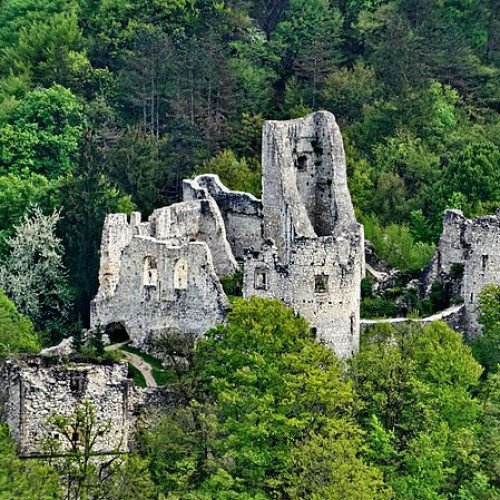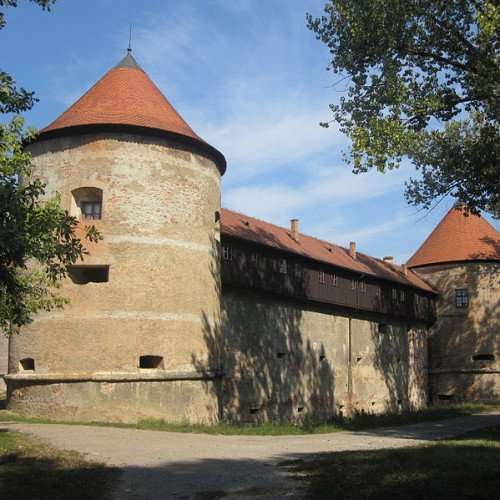Castles of "Croatia" SAMOBOR CASTLE vs SISAK FORTRESS

SAMOBOR CASTLE
Samobor Castle is a ruined castle atop of Tepec hill in Samobor, Croatia. It lies only a 10-minute walk away from the city centre. Remains of the old castle moat are still visible, as well as the massive entrance and most of the walls. The castle was built on a hill above the crossroads of then important routes in the northwestern corner of the Sava valley, above the medieval market town of Samobor. The castle was erected by the supporters of Czech king, Ottokar II of Bohemia, between 1260 and 1264, who was then in a war with Hungarian king Stephen V.[1] Croatian-Hungarian forces under command of duke of Okić soon retook the castle, for which he was granted the city of Samobor, as well as the privilege to collect local taxes. The fortification was originally a stone fortress built on solid rock - in an irregular and indented layout, which consists of three parts, out of which the central core represents the oldest part of the castle. In the southeastern part of the core there was a high guard tower (nowadays in ruins), which is the only remaining original part of Ottokar castle. Just next to the guard tower lies a semicircular tower with a small gothic chapel of St. Ana which is estimated to be built in third decade of the 16th century.
Statistics for this Xoptio

SISAK FORTRESS
The Sisak Fortress (Croatian: Tvrđava Sisak or Stari grad Sisak) is an early modern lowland fortification built on the bank of the Kupa River before its mouth into the Sava. It is situated in the suburb of modern-day city of Sisak, Sisak-Moslavina County, central Croatia. It is a triangle-shaped structure, mostly made of brick and supported by stone parts. Each corner of the fortress is reinforced with a round tower covered by conical roof. Towers are connected by the more than 30 metres long thick walls with loopholes. Being on the river bank, the fortress has a natural line of defense from the west-southwest, while the other sides are partially protected by the Sava River in the immediate vicinity, flowing southeast. In its history, the Sisak Fortress was damaged several times and subsequently subjected to renovations. Generally, although it needs a renewal today, it is in good condition. It houses the local town museum. The fortress was built following the increasingly threatening and devastating Turkish attacks on the Kingdom of Croatia. The construction works were ordered by the Bishop of Zagreb, the owner of the estate, and lasted from 1544 until 1550. The master builder (director muratorum) was Petar /Pietro/ de Mediolanus from Milan and the overall construction costs were estimated at more than 3,300 florins (forints). Having become Bosnian pasha in 1591, Hasan Pasha Predojević launched a few attacks on Sisak. During his last campaign in June 1593, his army of around 12,000 Ottoman soldiers suffered on 22 June 1593 a heavy defeat against the defending joint Croato-Slovene-Austrian forces and he himself lost his life. This battle was a turning point, which meant interruption of further Ottoman conquest. After slackening of Ottoman pressure on Croatian lands in the 17th century, the fortress changed its owners for a couple of times, being sometimes damaged, but immediately repaired. The last major damage occurred during the Second World War, as the fortification was hit by shells and the northwest tower was partially destroyed. Present-day fortress houses some collections of the Sisak Town Museum (established in 1951), which include holdings of archaeology, ethnology, cultural history and numismatics.